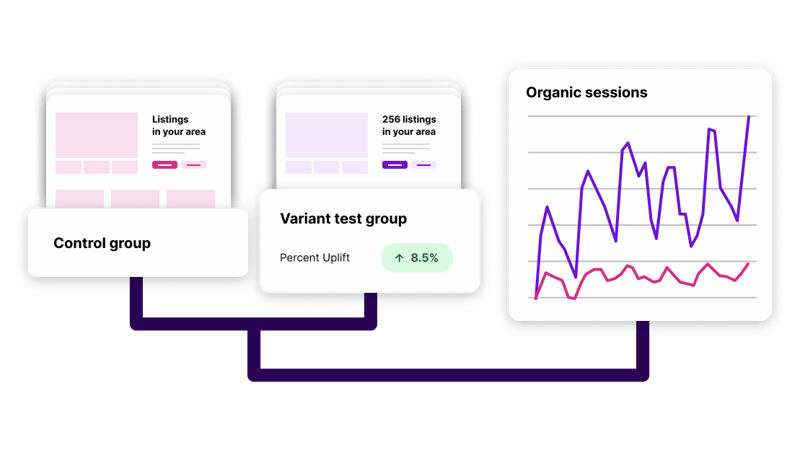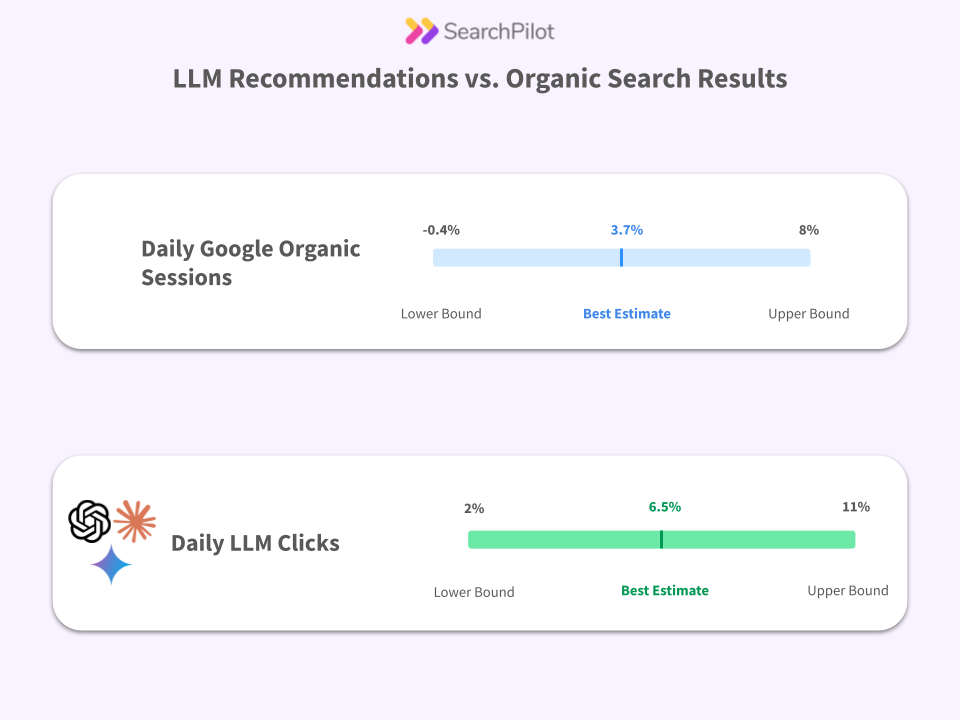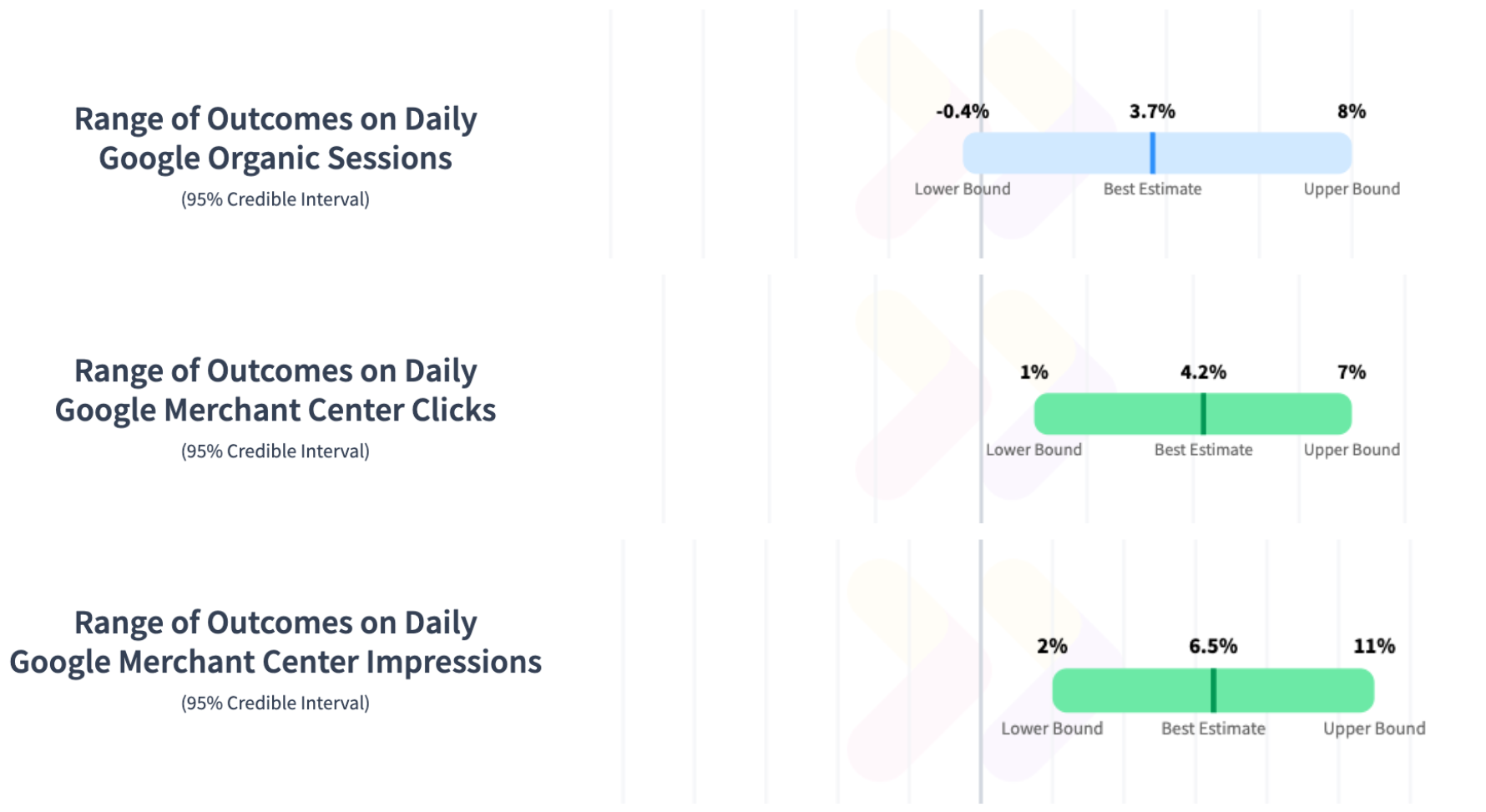Bucketing is the process of identifying control and variant groups of pages for your SEO tests. It’s a critical part of the SEO testing process. Yet it’s one that’s often handled entirely manually. This can slow down your efforts, eat up your testing resources, and limit the number of tests you can run.
If these are familiar challenges for your SEO team, we’d recommend taking advantage of smart bucketing. This is an automated approach that will reduce manual effort, speed up your testing, and improve your return on investment.
In this article, we’ll outline why smart bucketing is important, what automation looks like, and how your organization can benefit.
Why is smart bucketing essential for your SEO testing approach?
Like any scientific experiment, SEO tests need control and variant test groups. Or, as we refer to them, ‘buckets’. These groups consist of structurally similar pages belonging to a certain site section, such as country destination pages on a travel website.
In the variant group, you test your changes; in the control group, you make no changes at all. Doing this allows you to test your hypotheses and get concrete data to validate any changes.
Many testing programs bucket these pages based on instinct or random generation. This results in under-powered tests because:
- The power law suggests that a relatively small percentage of pages in a site section will have more traffic than the section average. So, when you have a large number of pages, it’s not always as simple as relying on an average. You have to distribute your high-traffic pages evenly.
- There can be a high degree of correlation between clusters of pages within one site section. For instance, summer destination pages, such as the Maldives or Italy, will likely get similar levels of traffic during the summer months. As such, you’ll want to distribute these pages evenly too.
To receive the most accurate results, you need to ensure your control and variant buckets are statistically comparable.
Of course, this can be tricky to do manually. Not to mention time-consuming. If your teams have to analyze each page's traffic or usage patterns individually, you’ll eat into your resources and decrease your SEO testing agility. And, if you decide to split pages randomly, you’ll almost certainly encounter too many inconclusive tests and false positives.
This is why a smart and automated bucketing approach is far more appropriate for your large SEO testing projects.
What is smart bucketing?
In short, forget manual analysis and random page selection – smart bucketing provides a simpler, more efficient method for splitting pages and conducting SEO tests.
With SearchPilot’s bucketing algorithm, you can configure your website section, set up experiments, and automatically bucket your pages (roughly splitting them in half) before you deploy your test. It ensures these pages are statistically similar by considering factors such as average traffic levels, variability of traffic, and seasonality.
The benefits of this automated approach are compelling:
- Time savings and no manual effort. Instead of spending hours or days bucketing pages manually, you can streamline the process so that it requires no manual intervention at all. It’s simply a case of setting up your site section, creating a split test, and then clicking a button. As well as saving time, this also relieves your SEO and development teams from manual work and allows them to focus on more valuable tasks.
- Reliable data. You’ll know that you are running the most powerful versions of your tests. This is because testing statistically similar control and variant pages will result in more accurate test data.
- Higher ROI. With more accurate test data, you can know whether a page change was successful or not. If the test is successful, you can commit to the change and reap the rewards. Whether your goal is higher traffic, conversions, or Google rankings, you’re more likely to see a healthy return on investment.
Digging deeper into SearchPilot’s algorithm: Identifying lookalike pages for resource-intensive changes
Let’s now assume you know which pages you’d like to change — and you know what changes you want to make to them. How do you find the right pages to test them against?
This is particularly difficult to decide if the changes you want to deploy are resource-intensive. For example, imagine you want to add a unique custom module to each variant page. If you have 1,000 pages in your bucket, this would require a huge amount of development resources. Even if you have the capacity, you need to be sure the payoff justifies the effort.
Not to mention, as you wait for your resources to build the unique modules for every page, you run the risk of your bucketed pages becoming ‘stale’. In other words, their statistical similarities may naturally change.
We have created a ‘lookalike’ bucketing algorithm to account for these situations.
Instead of testing a large number of random pages, you give us a shortened pre-defined list of pages you are changing. Once you’re ready to run your test, we deploy our algorithm and generate up-to-date lookalike control pages in real-time. This ensures your tests get the same accurate results as our regular bucketing algorithm. More than that, you needn’t waste valuable resources, time, and money on extensive changes for a test that may not deliver successful results.
Of course, there are many applications for our lookalike algorithm beyond testing custom modules. In another scenario, you may use the feature to test unique human-written content. Once again, commissioning content from your writers or freelancers for hundreds or thousands of pages can be extremely expensive. With the lookalike bucketing algorithm, however, you can test out these resource-intensive changes with a smaller test group of control and variant pages. By measuring the impact of these changes, you can then determine whether it’s financially sensible to write fresh content for all of the pages across the site section.
Manual bucketing isn’t working. Let’s embrace automation
Manual bucketing can be a time-consuming, complex challenge for organizations like yours, with thousands of pages to test and few resources to hand. That’s why smart bucketing is the best route to take.
Whether you’re deploying simple tests across thousands of pages or resource-intensive changes across a select few, the SearchPilot platform can deliver:
- Time savings
- Statistically similar page splits
- Accurate test data
Better still, you can expand your ambitions even further with an automated SEO testing approach. With the agility to run tests at speed and without investing all your resources on untested bets, you can experiment with truly unique changes you could never hope to accomplish manually.
If you’re keen to learn more about how our algorithms work, request a demo. We have much more to show you!



